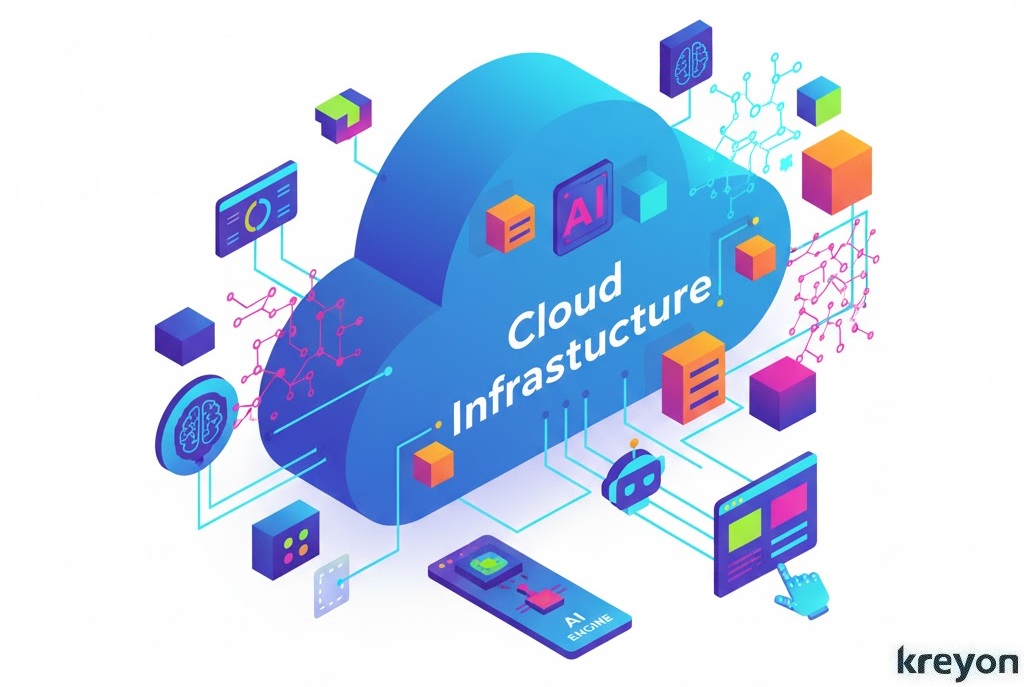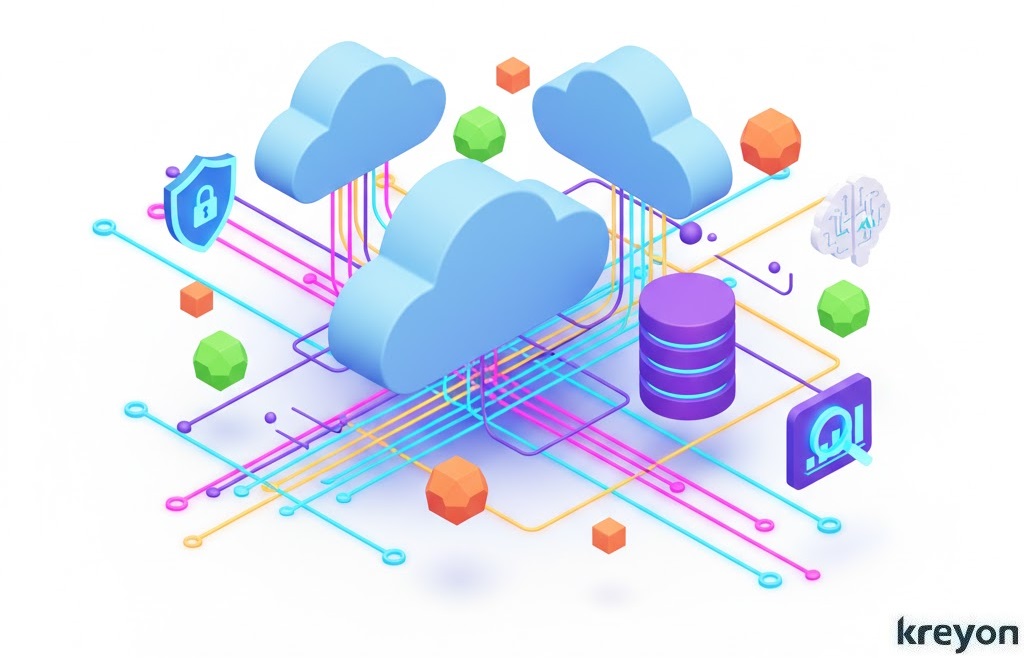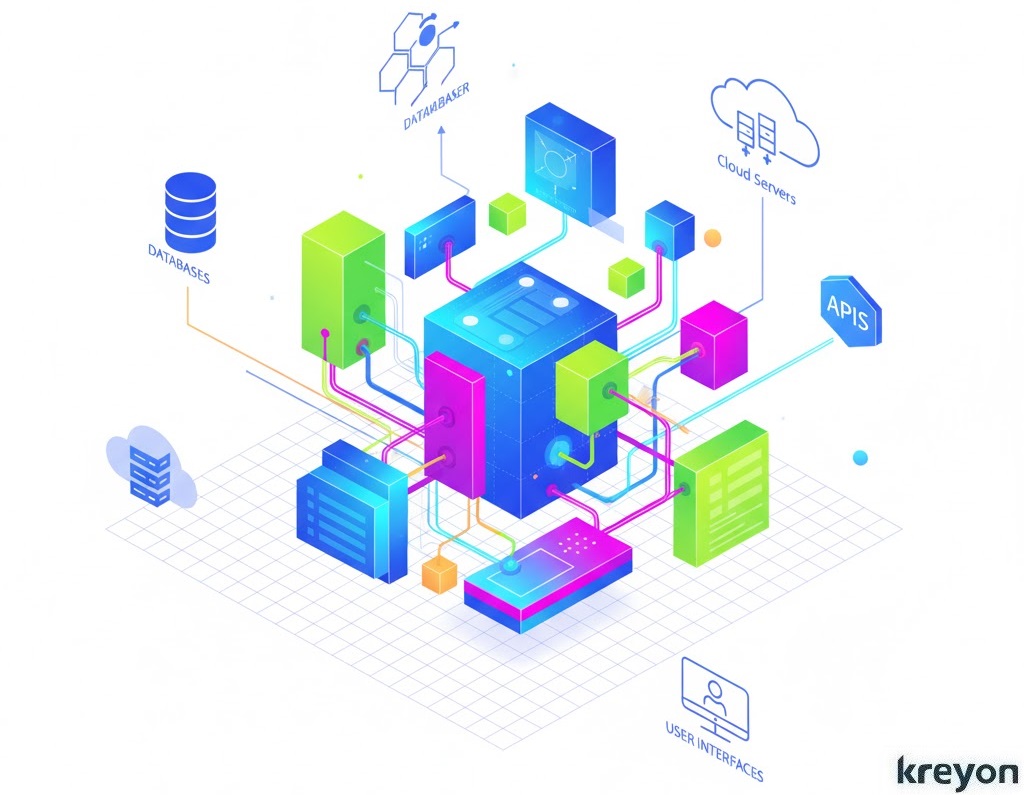The Hidden Architecture Behind Every Great Business Software Project

Every successful business software project, from a startup’s SaaS platform to a Fortune 500 enterprise system, has one invisible foundation: its technology stack. The stack is the silent engine that determines how fast your software runs, how secure it is, and how well it scales when your business grows.
Choosing the right tech stack isn’t just a technical decision; it’s a strategic business decision. The wrong one can lock you into high costs, performance bottlenecks, and developer scarcity. The right one can turn your idea into a scalable product that evolves with your market.
So, how do you pick the perfect combination of front-end, back-end, databases, and frameworks for your unique needs? Let’s break it down step-by-step.
1. Understanding What a Technology Stack Really Means in a Business Software Project
Before diving into comparisons, it helps to define what we mean by a technology stack.
In simple terms, your stack is the set of technologies that power your software. It usually includes:
-
Front-end (client-side): The part users see and interact with frameworks like React, Angular, or Vue.js.
-
Back-end (server-side): The logic, data handling, and APIs languages and frameworks like Node.js, Python (Django), or Java (Spring Boot).
-
Database: Where data lives SQL (PostgreSQL, MySQL) or NoSQL (MongoDB, Cassandra).
-
Infrastructure: The environment it runs on AWS, Azure, or Google Cloud.
The right combination impacts speed, maintainability, cost, and talent availability. Harvard Business Review’s 5 Questions to Ask About Your Digital Transformation shows that organizations that align technology with business strategy outperform peers by up to 20% in ROI.
2. Start with Business Goals, Not Framework Names
A common mistake in any business software project is choosing technologies based on trends rather than needs. CTOs sometimes get dazzled by buzzwords like “AI-powered,” “serverless,” or “microservices,” forgetting the real question: what problem are we solving?
Ask these strategic questions first:
-
What is the core purpose of the application? (e.g., internal efficiency, customer engagement, analytics)
-
How much scalability will be needed in the next 3–5 years?
-
What are the security and compliance requirements? (e.g., HIPAA, GDPR)
-
What is your budget and timeline?
-
What kind of talent pool is accessible in your region?
For instance, a fast-moving startup might prioritize speed-to-market with a JavaScript-based stack (React + Node.js + MongoDB). A regulated financial institution might favor stability and long-term support via Java or .NET Core.
3. Match Stack Choices to Your Business Software Project Type

Not all projects are created equal. Here’s a simplified guide to what typically fits different business use-cases:
| Project Type | Recommended Stack Example | Why It Works |
|---|---|---|
| Web Platform / SaaS | MERN (MongoDB, Express, React, Node.js) | Fast, scalable, single-language (JavaScript) stack |
| Enterprise Applications | Java (Spring Boot) + PostgreSQL + Angular | Strong security, stability, and enterprise-grade support |
| AI/Analytics Systems | Python (Flask/Django) + TensorFlow + PostgreSQL | Excellent for data science, ML, and APIs |
| E-Commerce Solutions | PHP (Laravel) or Node.js + MySQL | Easy integrations with payment gateways, plugins |
| Mobile Apps | React Native or Flutter + Firebase | Cross-platform agility, lower cost |
4. Factor in Scalability and Performance Early
When starting a business software project, scalability isn’t always the first concern, but it should be. Harvard Business Review’s 6 Key Levers of a Successful Organizational Transformation emphasizes that software needs to evolve as fast as the market.
Your technology stack affects:
-
Load handling: Will it perform well under thousands of concurrent users?
-
Modularity: Can new features be added without rewriting everything?
-
Deployment flexibility: Does it support cloud-native or containerized environments like Docker/Kubernetes?
For example, Node.js excels at handling many simultaneous connections (great for chat apps or live dashboards), whereas Python may suit heavy computational workloads better.
5. Consider Developer Availability and Community Support
Even the best-performing stack can become a liability if developers for it are scarce or expensive. For any business software project, sustainability depends on whether you can maintain and upgrade the system easily.
Look for:
-
Strong developer community (GitHub stars, Stack Overflow presence)
-
Documentation quality
-
Active updates and long-term support (LTS)
-
Third-party integrations and plugins
For example, JavaScript frameworks dominate job boards, meaning talent is easier to hire. Conversely, niche languages like Rust or Elixir might deliver performance but make recruitment difficult.
6. Balance Cost and Future Technical Debt

A common trap in software projects is choosing the cheapest short-term option, which later balloons into technical debt, costly rewrites, compatibility issues, or performance fixes.
When evaluating costs:
-
Include maintenance, hosting, and licensing (e.g., some databases or enterprise frameworks have ongoing fees).
-
Estimate the lifespan of each technology.
-
Consider integration costs with existing systems (ERP, CRM, HRMS, etc.).
-
Account for training and onboarding for internal teams.
According to McKinsey’s AI for IT modernization: Faster, cheaper, better(2024), technical debt now consumes up to 40% of IT budgets in mature organizations, a reminder that “cheap now” can be “expensive later.”
7. Don’t Forget Security and Compliance
In 2025, cybersecurity is no longer optional. Your technology stack directly affects how vulnerable your business software project is to threats.
Key factors:
-
Language vulnerabilities: Some frameworks (like older PHP versions) have frequent security exploits if not updated.
-
Built-in authentication & encryption support: Frameworks like Django, Laravel, and Spring Boot come with strong defaults.
-
Data protection laws: If your system handles personal data (GDPR, HIPAA, Indian DPDP Act), choose technologies with robust data-handling libraries and audit trails.
-
Cloud configuration: Use secure, compliant cloud services such as AWS Shield or Azure Defender.
See How to build a ‘cybersecurity ready’ organizational culture, World Economic Forum for insights on building security into business culture.
8. Evaluate Integration and Ecosystem Compatibility
No business software project operates in isolation. It must connect to CRMs, accounting tools, analytics, or customer portals. Your technology stack should easily integrate with APIs and existing systems.
Checklist:
-
Is the stack API-friendly (REST, GraphQL, gRPC)?
-
Does it support microservices or modular architecture for flexibility?
-
Can it connect easily with your current tech (e.g., Salesforce, SAP, HubSpot)?
Choosing an ecosystem with strong interoperability, like Microsoft’s Azure or Google Cloud Platform, often simplifies integrations and long-term management.
9. Prototype, Test, and Validate Before Committing

Even the most promising stack should be tested before full-scale adoption. Build a proof of concept (POC) or minimum viable product (MVP) to test real-world performance, developer comfort, and user experience.
Tips:
-
Use vibe-coding or low-code tools to accelerate MVP creation.
-
Monitor key performance indicators (KPIs) like load time, response speed, uptime, and user feedback.
-
Gather developer input: do they find the stack productive or frustrating?
-
Run security and load tests early.
This experimentation phase prevents costly surprises later and helps justify the final tech choice to non-technical stakeholders.
10. Plan for the Future: Evolution, Not Just Execution
Technology stacks evolve fast. What works today may be outdated in three years. The smartest organizations design systems that adapt, not just perform.
Future-proofing your stack means:
-
Preferring modular, service-oriented architectures
-
Using open-source technologies with large ecosystems
-
Adopting containerization (Docker) for portability
-
Embracing DevOps and CI/CD pipelines for faster iteration
By building for evolution, your business software project remains agile as new frameworks, AI tools, and compliance demands emerge.
Conclusion: Your Tech Stack Is a Business Strategy, Not Just Code
Choosing the right technology stack for your business software project is about balancing innovation with stability, cost with scalability, and performance with maintainability.
The best stack is the one that:
-
Aligns with your business goals
-
Has a strong developer ecosystem
-
Supports security, compliance, and scalability
-
Keeps future technical debt minimal
Technology is the skeleton of digital transformation, but your strategy is its soul. The organizations that win are those that see technology selection not as a developer’s task, but as a C-suite strategic decision.
Ready to architect your next business software project for growth? Kreyon Systems is building solutions for success, scale and longevity to keep your business ahead. If you have queries, please get in touch.
